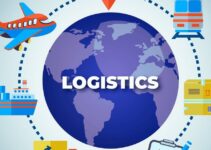Logistics management is the practical implementation of supply chain management that allows companies to manage, plan, and execute processes in moving and storing products and goods. Today, we’ll discuss the top 23 logistics activities in logistics management.
Top 12 Logistics Activities
Let’s discuss the top 12 logistics activities in logistical management and they’re as follows;
Procurement
Procurement is the method of finding, sourcing, purchasing, and paying for goods and services. The goal of procurement is to purchase and acquire products and goods relevant to the needs and requirements of the company. However, the procuring team focuses on establishing relationships with suppliers, negotiating terms and conditions, and streamlining various processes.
Supply
Supply is the method of setting up inventory through procurement and production. The goal and objective of supply management is to decrease the TAC (total acquisition cost) while satisfying the quality requirements, response time, and availability; relevant to the inventory master plan and customer service policy.
Order Processing
Order processing is the most significant step and it comprises various activities and processes. They’re like status reporting, dispatching orders, receipt, transmission, and preparation. Efficiency and effectiveness of the order processing processes would help you to avoid rework and repeat the process. However, the logistical cost carries a vast area of logistical activity and allows the product to go through various stages successfully.
Order Management
Order management is the method of managing and tracking customer orders and taking necessary steps to fulfill customer orders. It comprises of accepting customer orders, picking, packing, and shipping the ordered products to the customers. Finally, you need to track the customer orders to make sure they’re delivered to the right locations of customers.
Demand Forecasting
Demand forecasting is the method of predicting the demand for the product for the future. It comprises expecting the customer’s needs and requirements in advance and it helps the company to know and produce the product in the right quantity. However, it also means predicting how much resources and supplies that you would require for production.
Customer Service
Customer service allows the company to satisfy the needs and requirements of customers. It is reliant on the efficiency of logistical activities and processes for the timely delivery of products and goods in the right quantity. You should make sure that you have control over the order placement and take the necessary steps for fast and speedy delivery.
Inventory Management
Inventory plays a key role and it helps the company in processing performance information and cost to conduct and perform various routine operations. The increasing cost has made it challenging for all the business processes including inventory management. The high inventory cost would directly impact the profitability of the company. When customer demand is high in the competitive market, then having the key insight would help the company gain a competitive edge.
Warehousing Management
Warehouse management is the method of storing products and goods and it comprises managing equipment and tools that are necessary to perform warehousing activities. The focus of storage is to efficiently employ the space to conserve and maintain the stock. However, when it comes to choosing the warehousing place, it depends on various factors like taxation, proximity to the customer location, and easy exit routes. The proximity of the warehousing location to the customers and raw materials, would decrease the transportation distance and amplify the customer experience.
Material Handling
Material handling is the sub-category of logistics and transportation and it comprises of packaging, storage, and all types of movements. It also deals with internal material movement inside the organization. You can do so with the assistance of conveyor systems, retrieval machines, storage, lifting trucks, and forklifts. However, the material flow outlines the chain logistics from suppliers to the customers. The objective is to design and structure the material handling in such a way that it would save cost, decrease lead time, and avoid wastage.
Transportation
Transportation comprises all the movement and flowing activities from the point of production to the point of consumption. It focuses on delivering the right quantity in the perfect condition. You can’t perform various activities and processes like marketing, distribution, and production without transportation. The objective of any logistical professional is to improve transport by decreasing costs and improving competitiveness.
Packaging
The focus of packaging is to conserve the product, make sure the safe delivery of products to the right destinations of customers. While negotiating with suppliers, the focus is to value the quality along with the packaging cost. You should deploy the right type of boxes relevant to the product traits to make sure its safety and security.
Return Management
Return management focuses on managing returns moving back from customers to the company. It plays a key role in supply chain and logistics management and it influences the company’s financial performance, inventory management, and customer satisfaction. However, it comprises managing returned goods, analyzing their conditions, and taking the right course of actions; whether it is disposing, reselling, and refurbishing.
Conclusion: Top 12 Logistics Activities
After an in-depth study of the top 12 logistics activities; we have realized that logistics management plays a key role in supply chain management. If you are learning about the activities involved in logistics; then you should keep in mind the abovementioned logistical activities and processes.
Ahsan is an accomplished researcher and has a deep insight in worldly life affairs. He goes Live 3 days a week on various social media platforms. Other than research writing, he’s a very interesting person.


